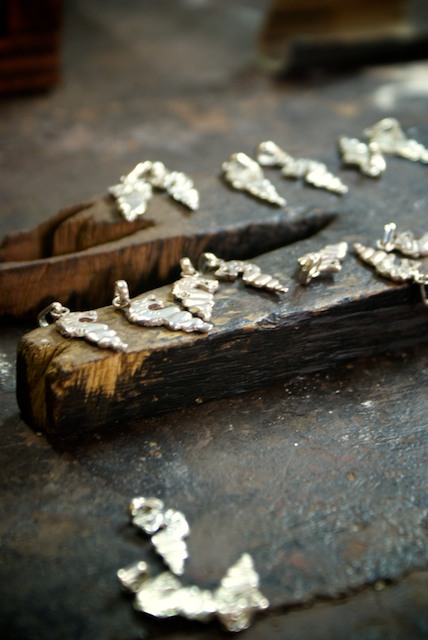I recently hooked up with a family-run company which works a 'mine to market' scheme -- meaning they do everything with no middle-men. The level of transparency in their operation is such that they routinely open their doors to anyone who asks. And so, we asked. And this is what we saw.
In a building behind the tennis courts and swimming pool of one of Lusaka's 4-Star hotels is the unassuming workshop for "The Jewel of Africa," a family-run company which owns some small mines and has established themselves as one of a handful of Zambia's gemstone and jewelry. The operation is totally self-contained, the workshop does everything from the metal smithing and gemstone cutting to designing, marketing, and retailing. The above photo is from the 'homewares' workshop where they make silver trinkets like souvenir teaspoons, napkin rings and such.
Each worker has a set of projects and keeps their tools and 'in-progress' items in their own little lock-box.
In another room, they are working on silever and gold jewelry, making necklaces, bracelets, and setting stones (above, a butterfly necklace in progress. below, citrines waiting to be set) They learn their craft through apprenticeships, training, and hands-on-experimentation.
Above, this jeweler is polishing the loops on silver charms. The charms depict Nyaminyami, the River God of the Zambezi who has the body of a snake and the head of a fish. The people of the river valley in Zambia and Zimbabwe believe they are protected by this ancestral spirit, who "fed them from his own meat in times of hunger." Given that most tourists leave zambia with a Nyaminyami carving, charm, walking stick or necklace of some sort or another, I'd say this story is incredibly relevant today.
The jewelry is entirely hand-made
This is the casting room where two artists sit, one making silver necklaces, the other making cast figurines of animals. This gentleman (below) is the necklace maker, and I think that 'gentleman' is the most fitting term to describe him. He is lovely and patient and exceedingly talented. The question we all asked was, is anyone apprenticing with him? Has he found someone willing to take a spot at the bench next to him? (Ooop, after the question about his eyesight and working with such tiny tiny tools and tiny tiny links.) He starts with a spool of silver thread, winds it into a spring, cuts each loop of the spring and connects the loops to form the necklaces. This description does not do justice to the necklaces he makes, of course. Some are simple chains but most are intricately braided creations.
It was really neat to see the figurine casting. In my end-of-the-rainy-season-allergy-fog I'm not remembering the details but know they use the 'Indirect, Lost Wax Process' involving wax models, rubber molds, and slurries to do models making (positive and negative), chasing spruing, polishing..
The gemstone cutting starts with raw stones (cutting the facets by hand) and ends with creating the settings and finishing the pieces. They just finished a gorgeous video which shows the details of the entire process -- (I'll link it up as soon as it's posted!) Below is Todd's Dad admiring their cut emeralds.
and Finn, who walked away not with the $10,000 emerald and diamond pendant but with a pretty pink and green tourmaline rough...














No comments:
Post a Comment